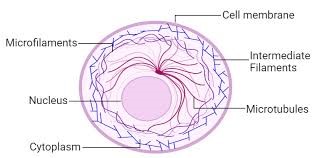How many chromosomes would be present in the gametes of a diploid organism with a chromosome number of 46?
23.
46.
69.
92.
Correct Answer : A
Gametes, the reproductive cells (sperm and eggs) of diploid organisms, contain half the number of chromosomes found in somatic cells. In a diploid organism with a chromosome number of 46, the gametes would contain 23 chromosomes. This reduction in chromosome number is achieved through the process of meiosis, which produces haploid gametes from diploid precursor cells. During meiosis, the chromosome number is halved through two rounds of cell division, resulting in the formation of four haploid daughter cells, each with half the original chromosome number.
HESI A2 Exam Quiz Bank
TEAS 7 Exam Quiz Bank
Find More HESI Questions
HESI A2 Questions: We got the latest updated HESI A2 Questions
100% Money Refund: 100% money back guarantee if you take our full
assessment pass with 80% and fail the actual exam.
Live Tutoring: Fully customized live tutoring lessons.
Guaranteed A Grade: All students who use our services pass with 90%
guarantee.
Related Questions
Correct Answer is A
Explanation
The cytoskeleton is critical to cellular motility, providing structural support and facilitating movement within the cell. It is a dynamic network of protein filaments and tubules that extend throughout the cytoplasm, giving the cell its shape, organizing its internal structure, and enabling various cellular processes. The cytoskeleton is involved in cell motility through the interaction of its components, such as actin filaments, microtubules, and intermediate filaments, with motor proteins that generate force and movement. Cytoskeletal elements are responsible for processes such as cell crawling, cell division, intracellular transport, and the maintenance of cell shape and integrity.

Correct Answer is C
Explanation
Passive transport refers to the movement of molecules across a biological membrane without the expenditure of cellular energy. This process occurs down the concentration gradient, meaning molecules move from areas of higher concentration to areas of lower concentration until equilibrium is reached. It includes simple diffusion, where small, non-polar molecules like oxygen and carbon dioxide can pass directly through the lipid bilayer of the membrane, as well as facilitated diffusion, where larger or polar molecules move across the membrane with the help of transport proteins, such as channel proteins or carrier proteins. Overall, passive transport is essential for maintaining the balance of molecules within cells and between different cellular compartments.
Correct Answer is D
Explanation
The circulatory system is responsible for transporting oxygen molecules to different locations throughout the body. Oxygen is crucial for cellular respiration, the process by which cells generate ATP (adenosine triphosphate), the energy currency of the cell. In the circulatory system, oxygen is transported by red blood cells, which are specialized cells that contain the protein hemoglobin. Hemoglobin binds to oxygen in the lungs, where oxygen concentration is high due to inhalation, and releases it in tissues where oxygen concentration is low due to cellular respiration. This process ensures that oxygen is efficiently delivered to all cells in the body for their metabolic needs.
Correct Answer is D
Explanation
The flagellum is a whip-like structure found in many single-celled protists, bacteria, and sperm cells of animals. Its primary purpose is propulsion, enabling the cell to move through its environment. The flagellum achieves propulsion by undergoing a whip-like motion, either beating rhythmically to propel the cell forward or rotating like a propeller. This movement allows the cell to navigate toward nutrients, avoid harmful substances, or seek optimal environmental conditions for survival and reproduction.
This question was extracted from the actual HESI A2 Exam. Ace your TEAS exam with the actual HESI A2 Exam questions, Start your journey with us today
Visit Naxlex, the Most Trusted HESI Prep Platform With Guaranteed Pass of 90%.
Money back guarantee if you use our service and fail the actual exam. Option of personalised live tutor on your area of weakness.
